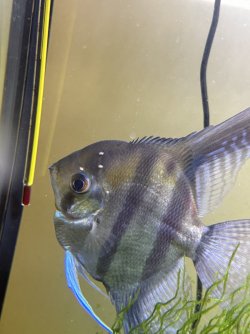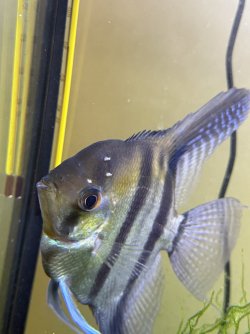Hey everyone! I need some help figuring out whats wrong with my angel fish. I just noticed several white bumps on only one side of my fish. It sounds gross, but they almost look like zits that have pus coming out of them? I’m worried that it might be ich. I’m unfamiliar with the parasite, but I also am not sure that would make sense because nothing new has been added to my tank in maybe a year? So I’m not sure how ich would have gotten into my tank. Does this look like ich? If not, what is it?
Extra info: Its just the one angel fish living in a 47gallon tank with just three other fish (two mini catfish and a pleco). The only living plant is moss.
Any and all advice appreciated
Extra info: Its just the one angel fish living in a 47gallon tank with just three other fish (two mini catfish and a pleco). The only living plant is moss.
Any and all advice appreciated




